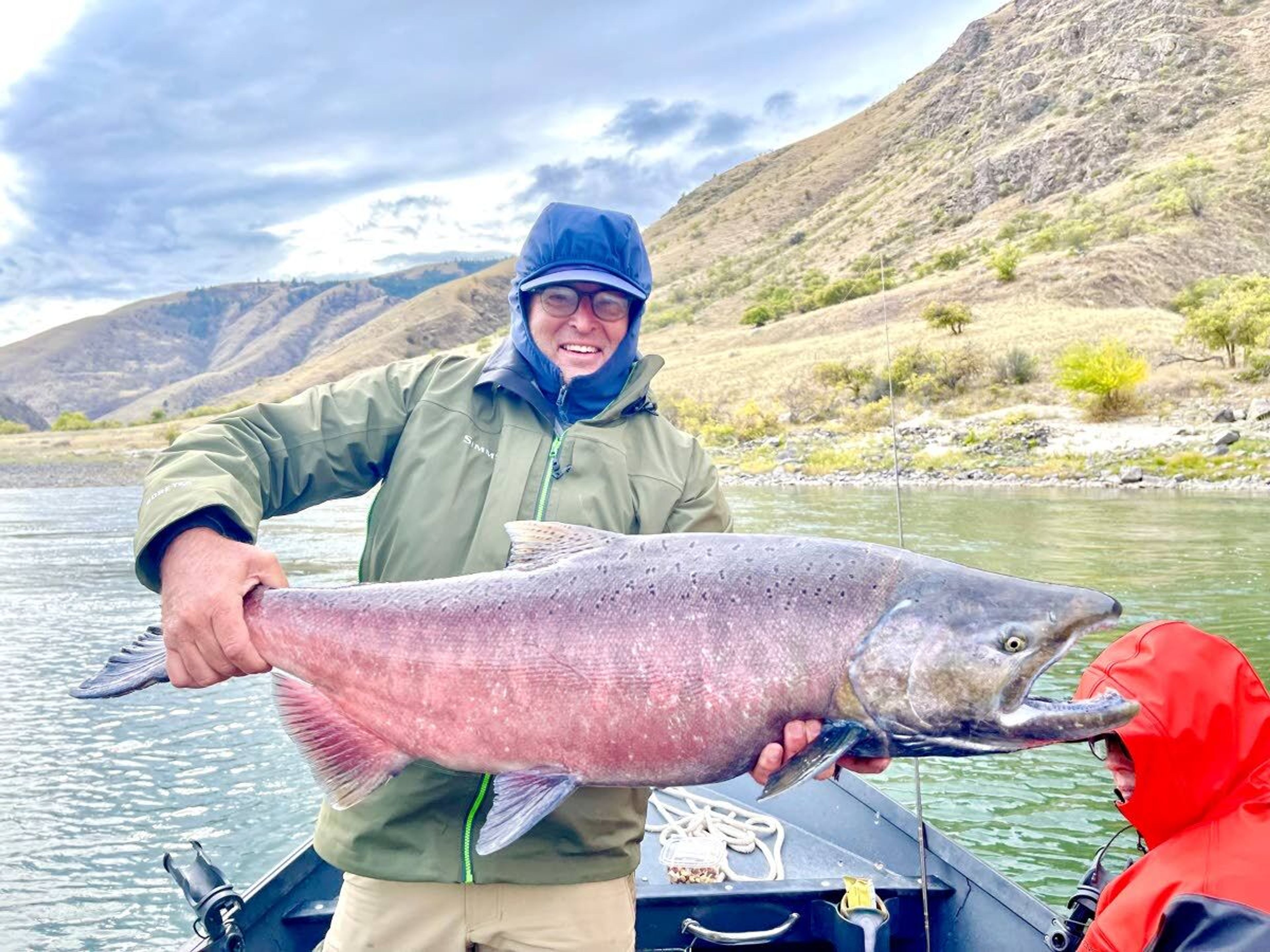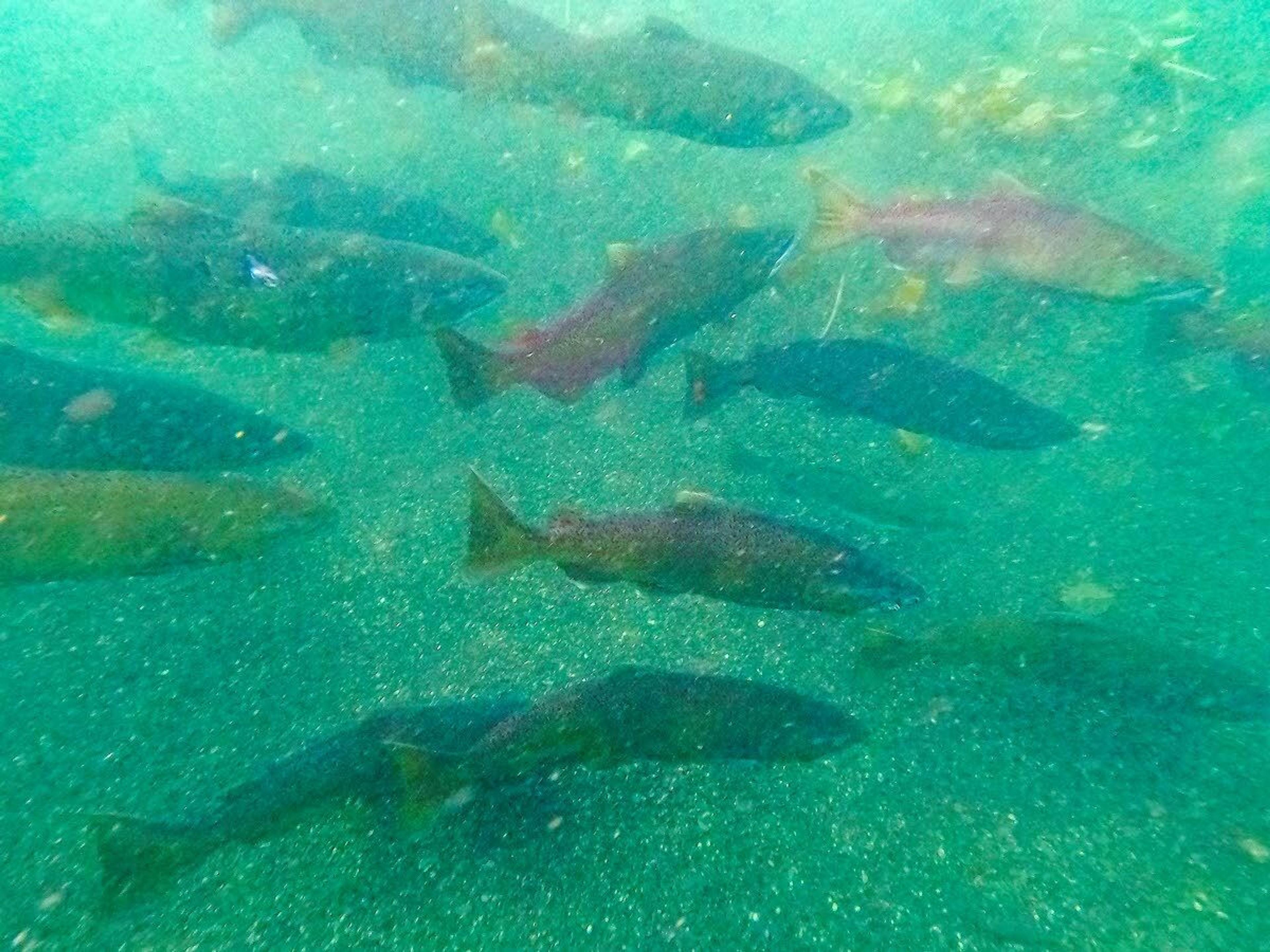Fall salmon fishing seasons are right around the corner
Fall chinook and coho starting to show up at Lower Granite Dam
Anglers who fish the Snake River and its tributaries ought to have ample opportunity to catch both fall chinook and coho in the coming weeks and months.
Idaho’s fall chinook fishing opens next Sunday on all three rivers and coho season opens Sept. 1.
Anglers at Buoy 10 near the mouth of the Columbia River are already catching fall chinook and coho. As of Thursday, about 500 fall chinook and 50 coho had been counted in the fish ladders at Bonneville Dam. At Lower Granite Dam on the Snake River west of Clarkston, dozens of chinook are being counted daily.
The forecasts for both runs are solid but by no means records. Becky Johnson, production director of the Nez Perce Tribe’s Department of Fisheries Resources Management, said about 25,000 fall chinook and 12,400 coho are expected to return to the Snake River and its tributaries. Most of the coho, about 10,000, will be bound for the Clearwater River and the rest are bound for the Lostine River, a tributary to the Grande Ronde. Fall chinook return to the Snake, Salmon and Clearwater rivers.
About 47,000 fall chinook and 14,000 coho returned past Lower Granite Dam last year. The tribe spent two decades restoring the coho run that went extinct in the 1980s and successfully fought to have hatchery fall chinook released above Lower Granite Dam. Both progams proved succesful and the fish now provide regular fall fishing opportunities.
It starts with fall chinook, big bruisers that can push 30 pounds.
“If the run comes in at 25,000 it would be less than the last couple of years but we have generally seen more fish returning than the forecast recently, so we are hopeful,” Johnson said.
Before dams blocked fall chinook from much of their spawning grounds and reduced their survival through the lower Snake and Columbia rivers, annual returns were massive. The fish are listed as threatened under the Endangered Species Act. Hatchery programs have boosted returns and the number of fish spawning in the wild.
“There used to be 500,000 or more fall chinook that came back,” Johnson said. “We are not to where we used to be — where we have more than enough fish for harvest and spawning and nutrient enhancement — but these will provide fisheries and we won’t have to constrain fishing for broodstock collection.”
Unlike spring chinook, steelhead and coho, fall chinook used in spawning programs are captured at Lower Granite Dam. While that removes a small number of adult fish, about 3,600, from fisheries upstream of the dam, Johnson said it has the benefit of ensuring fishing won’t be constrained by the need to meet broodstock goals.
Starting this year, fall chinook released from Nez Perce Tribal Hatchery and Lyons Ferry Hatchery will be subyearling fish. In the past, the release has been split between yearlings and subyearlings.
Johnson said juveniles released as yearlings tend to return as jacks at a much higher rate than those released as subyearlings.
Barker may be contacted at ebarker@lmtribune.com or at (208) 848-2273. Follow him on Twitter @ezebarker.






